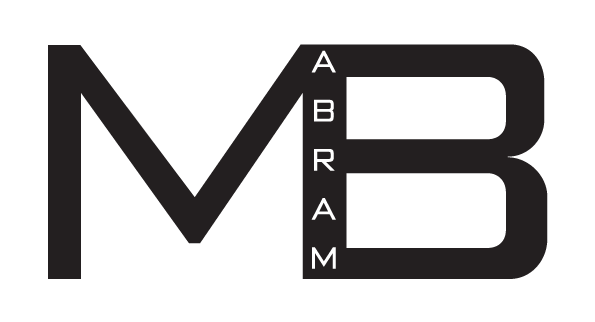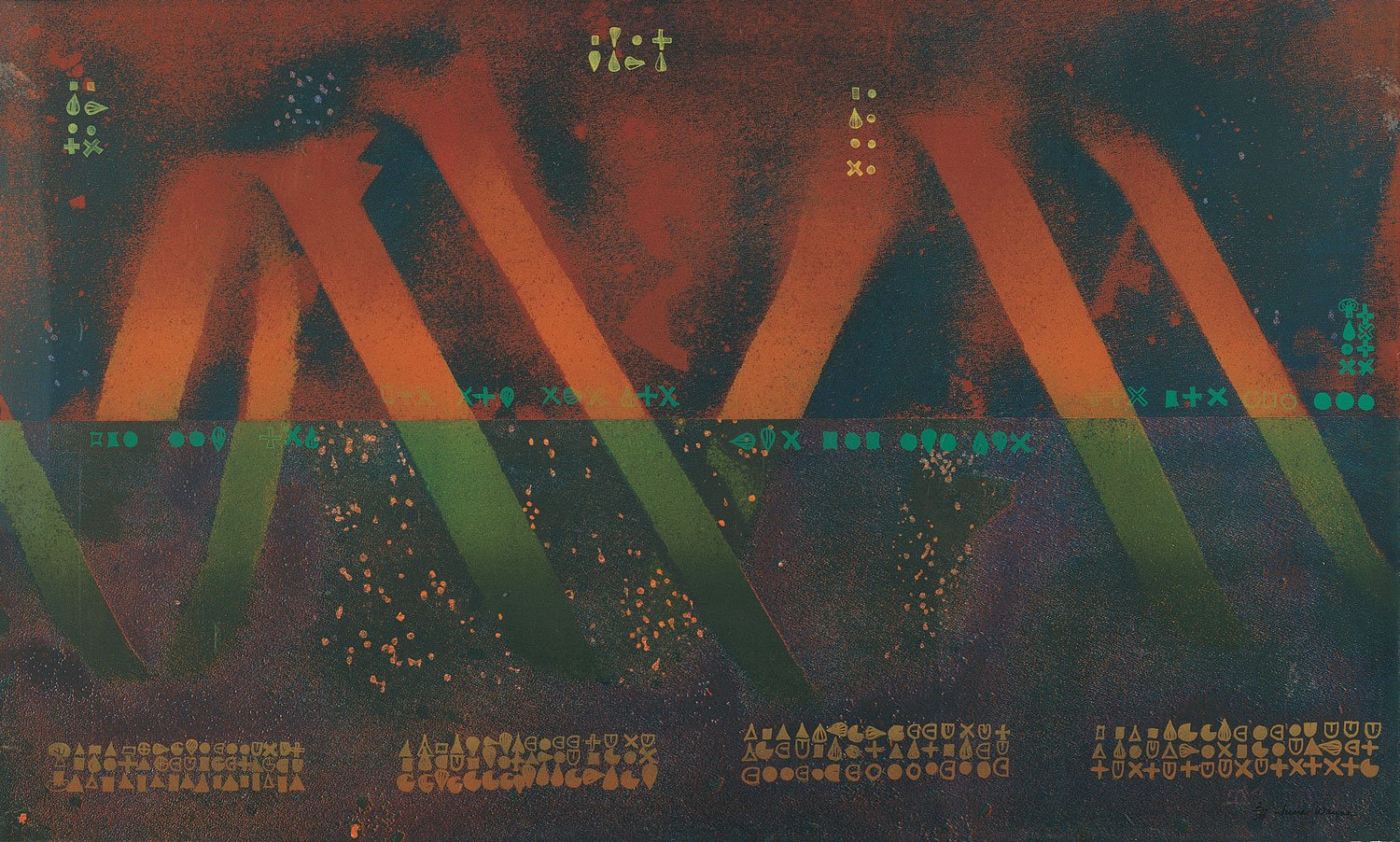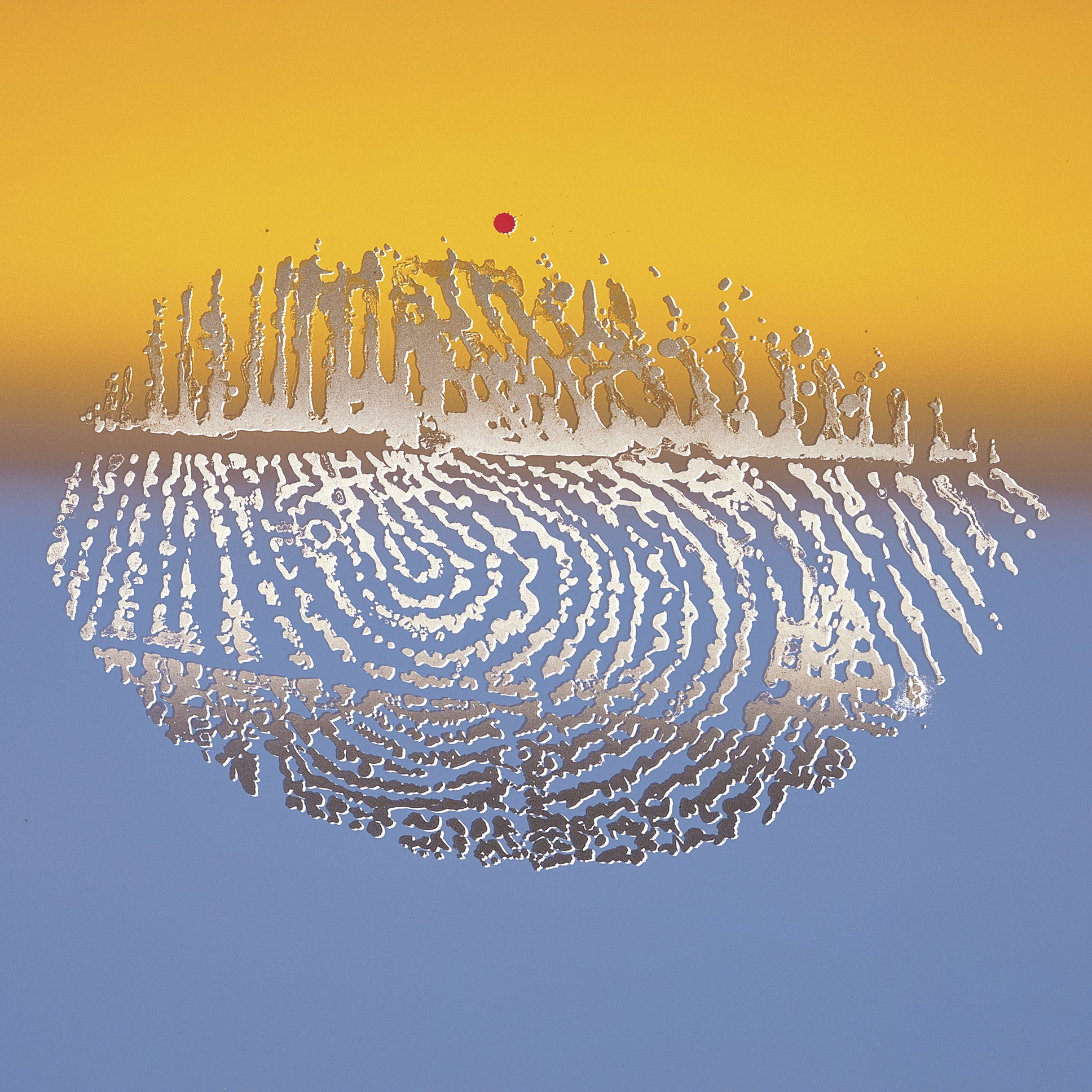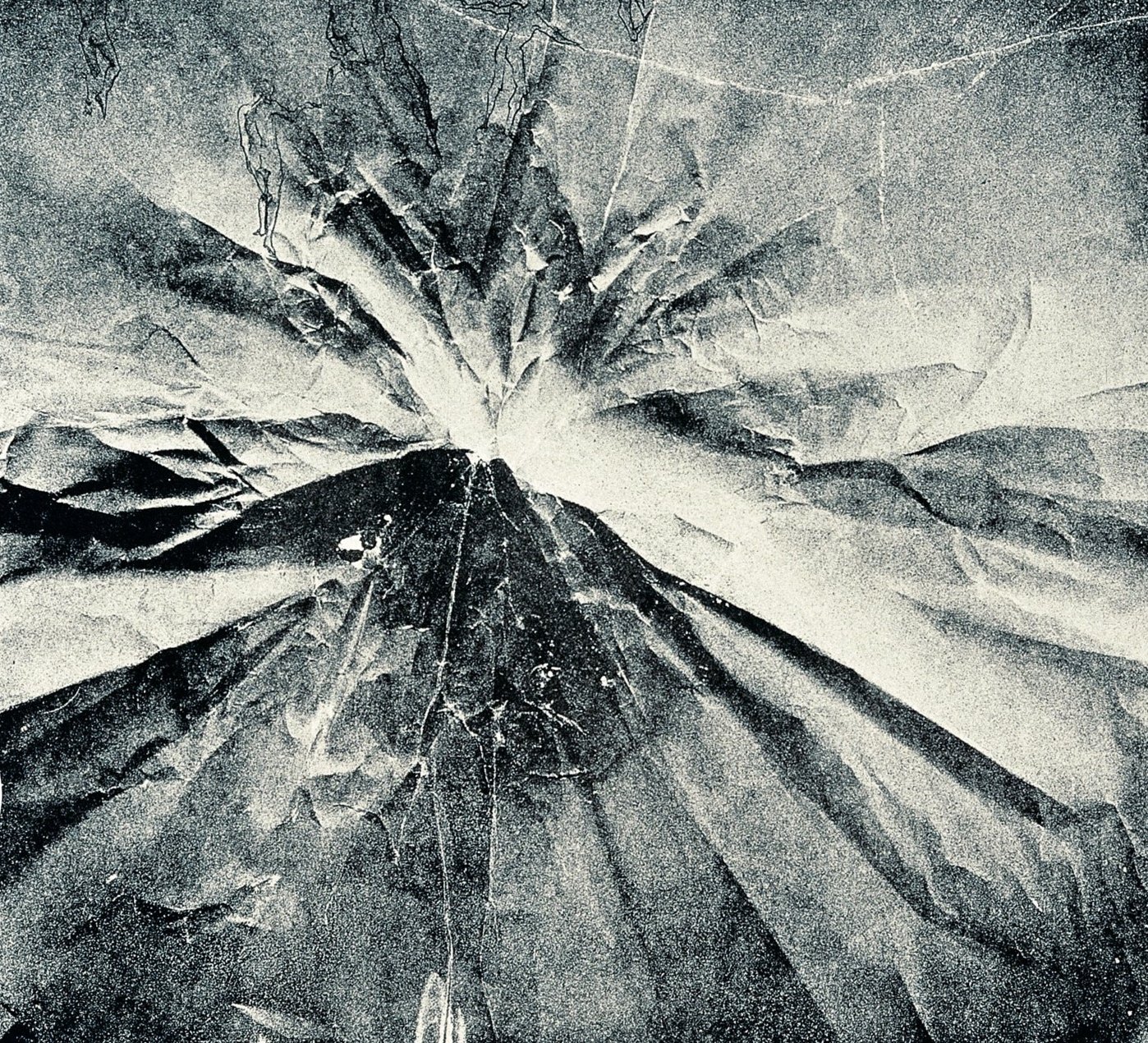JUNE WAYNE・ART & SCIENCE
The Terrestrial Works
As a young girl, June Wayne sat on the shores of Lake Michigan in her native Chicago, observing with terror and fascination the power of water and waves. This was the beginning of a lifelong interest in natural phenomena.
Wayne early “recognized that the cosmic images that had inspired generations of poets had been superseded by a new vision of the universe that scientists were now discovering.” (Robert P. Conway) And as James Cuno, then Director and President of the Art Institute of Chicago, wrote at the time of Wayne’s landmark exhibit “Narrative Tapestries: Tidal Waves, DNA, and the Cosmos”, her works “magisterial in conception and extraordinary in their refined beauty and execution” represent “her decades of research into the intersection of art and science”.
By 1965, Wayne's artistic focus had shifted to science, and its relation to our humanity and planet. Her studies would encompass genetics, optics and perception, seismic events, wind and tidal waves, quantum physics, environmental change, artificial intelligence, and the rapid expansion of the tools of state surveillance. Her attention subsequently expanded to the outer cosmos and the origins of the universe. She was informed both by her own research, and conversation with leading scientists of her day, including Harrison Brown, Richard Feynman, Al Hibbs, and Jonas Salk, with frequent visits to the Jet Propulsion Laboratory, California Institute of Technology, and Palomar Observatory. Wayne’s approach was lyrical and poetic, mindful that “too close a relationship to the facts work against the metaphysical and aesthetic potentials.” (Jay Belloli)
“Even when he engaged in blue sky thinking, his science was not separate from his art. Together they served his driving passion, which was nothing less than knowing everything there was to know about the world, including how we fit into it." These words by Walter Isaacson, describing Leonardo da Vinci, might well have been written about Wayne, whose Catalogue Raisonné was aptly titled “The Art of Everything”. No artist of the 20th century explored more consistently, persuasively, and arrestingly the frontiers of scientific knowledge.
Our thanks to the Estate of June Wayne.
MB Abram
“Wayne takes Leonardo as a model of modernism. Da Vinci, whose drawings from nature track an ‘invisible energy that was shaping the trees and carving the waters into waves’ created an open-ended conceptual art fueled by scientific curiosity. Working in the 1980s, Wayne recaptured the conceptual tensions firing the origins of twentieth-century modernist art. ”
“She was the best.”
“Technologies. From ink and stone and color to thread. And she manages to get that sense of vitality and rhythm whatever the form. It is very rare. Very, very rare.”
“June Wayne’s tapestries, magisterial in their conception and extraordinary in their refined beauty and execution, represent her decades of research into the intersection of art and science.”
“Wayne’s ideas often anticipated the aesthetic interests of others.”
“What is wonderful about her work is her bravery, her passion for science, her passion for exploring a medium that at the time no other significant American artist was exploring. Astonishing.”
“I have yet to see a work of June Wayne that has not moved me.”
BIBLIOGRAPHY
—“She was the best.”
Joel Wachs President of the Andy Warhol Foundation for the Visual Arts, which underwrote June Wayne’s Narrative Tapestries: Tidal Waves, DNA, and the Cosmos, Art Institute of Chicago, 2010. Communication at the time of the LA City Council's 2018 proclamation honoring the centenary of Wayne’s birth.
—“Technologies. From ink and stone and color to thread. And she manages to get that sense of vitality and rhythm whatever the form. It is very rare. Very, very rare.”
Andrea Rich (1943-2014)
President and Director, Los Angeles County Museum of Art, 1995-2005. Interview on the occasion of June Wayne’s Narrative Tapestries: Tidal Waves, DNA, and the Cosmos at the Art Institute of Chicago, 2010.
—“June Wayne’s tapestries, magisterial in their conception and extraordinary in their refined beauty and execution, represent her decades of research into the intersection of art and science.”
James Cuno As President and Director of the Art Institute of Chicago. Foreword to June Wayne’s Narrative Tapestries: Tidal Waves, DNA, and the Cosmos Exhibition Catalogue, Art Institute of Chicago, 2010.
—“Wayne’s ideas often anticipated the aesthetic interests of others. In 1935, a quarter of a century before Pop Art, she based an exhibition of drawings and watercolours on Ben Day dots in comic strips. Her special constructions of 1950, made from ink drawings on glass sheets slotted into a framework, predated Rauschenberg’s ‘Shades’ by fourteen years. The tiny lithograph ‘Strange Moon’ of 1951 preceded by a decade or more the Optical Art first seen by New Yorkers in the ‘Responsive Eye’ exhibition of 1965. And not only did Wayne print to the edge of the lithographic stone before Larry Rivers excited the East Coast with the device around 1960, but her artist’s book ‘Songs and Sonets’ by John Donne, completed in December 1958 was amongst the first in the Parisian tradition to be produced by an American, let alone by an American woman.”
Pat Gilmour (1932-2021)
Founding Senior Curator of Prints at Tate, London; Senior Curator, National Gallery of Australia. Print Quarterly, June 1992, Volume IX, No. 2, A Love Affair with Lithography, the Prints of June Wayne.
—“What is wonderful about her work is her bravery, her passion for science, her passion for exploring a medium that at the time no other significant American artist was exploring. Astonishing.”
Jay Belloli (1944-2021)
Curator "Mars: Astronomy and Culture” international traveling exhibit; Museum of Modern Art, Fort Worth; San Diego Museum of Contemporary Art; Armory Center for the Arts, Pasadena; Detroit Institute of Arts. Co-Curator with Betty Ann Brown of “June Wayne Paintings, Prints, and Tapestries”, Pasadena Museum of California Art, 2014; Author of “The History of Space Photography”, California International Arts Foundation, 2014. Interview on the occasion of June Wayne’s Exhibition “Narrative Tapestries: Tidal Waves, DNA, and the Cosmos”, Art Institute of Chicago, 2010.
—“I have yet to see a work of June Wayne that has not moved me.”
Alitash Kebede, Art Dealer. Early promoter of African American artists and artists from the African Diaspora, including Romare Bearden, Alexander 'Skunder’ Boghossian, Nanette Carter, Ed Clark, Emilio Cruz, Herbert Gentry, Al Loving, Richard Mayhew, and others. Named one of the most influential women in the contemporary art world, Forbes Magazine 2020.









